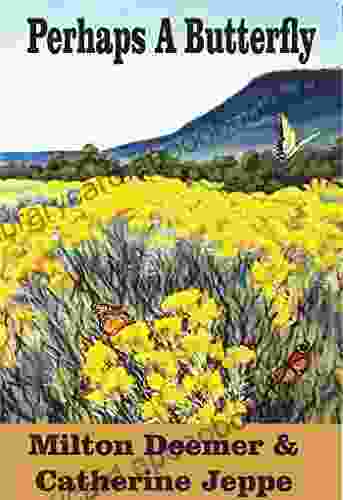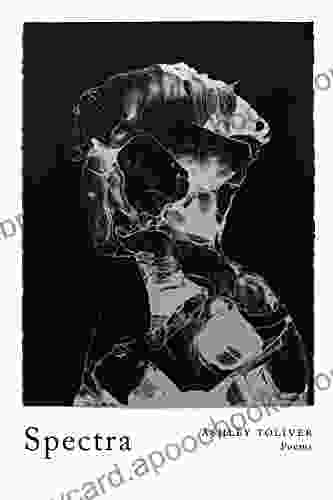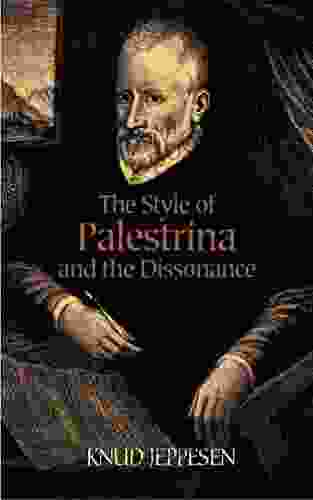Delve into the Harmonious Style of Palestrina and Dissonance: A Journey Through Dover's On Music

4.6 out of 5
| Language | : | English |
| File size | : | 21926 KB |
| Text-to-Speech | : | Enabled |
| Screen Reader | : | Supported |
| Enhanced typesetting | : | Enabled |
| Print length | : | 465 pages |
| Lending | : | Enabled |
: Unveiling the Essence of Renaissance Polyphony
In the tapestry of Western music, the Renaissance period stands as a testament to the exquisite interplay of voices and the emergence of polyphonic textures. Among the towering figures of this era, Giovanni Pierluigi da Palestrina holds a unique place, renowned for his mastery of counterpoint and the creation of some of the most enduring choral works. His compositions embody the essence of Renaissance polyphony, characterized by its clarity, balance, and a profound understanding of dissonance.
To fully appreciate the genius of Palestrina and the intricacies of Renaissance music, one must delve into the intricacies of dissonance and its treatment. In his seminal work, "On Music," first published in 1602, Thomas Morley offers a comprehensive exploration of musical theory and practice during the Renaissance period. Morley's treatise provides invaluable insights into the use of dissonance, its role in creating musical tension and release, and its significance in shaping the expressive qualities of polyphonic music.
The Style of Palestrina: A Master of Clarity and Balance
Palestrina's musical style is often described as "classical" due to its adherence to the principles of clarity, balance, and proportion. His compositions are characterized by a meticulous attention to detail, with each voice line carefully crafted to contribute to the overall harmonic texture. Palestrina's use of dissonance is always judicious, employed to create momentary tension that is quickly resolved, enhancing the sense of harmonic stability and coherence.
One of the hallmarks of Palestrina's style is his masterful use of counterpoint. In his compositions, multiple melodic lines intertwine, creating a rich and complex tapestry of sound. Palestrina's counterpoint is characterized by its smoothness, with each voice line moving in a logical and independent manner, avoiding dissonant clashes and creating a sense of rhythmic and melodic unity.
Dissonance in Renaissance Music: Exploring Tension and Release
Dissonance, in the context of Renaissance music, refers to the simultaneous sounding of two or more notes that create a sense of tension or instability. Unlike in later periods of music, dissonance in Renaissance music was not employed for its own sake but rather as a carefully controlled means of creating musical interest and enhancing the emotional impact of a composition.
Morley, in "On Music," provides a detailed explanation of the various types of dissonance and their appropriate usage. He emphasizes the importance of preparing dissonances properly, ensuring a smooth transition from consonance to dissonance and back again. Morley also discusses the concept of "resolution," the process by which dissonance is resolved into consonance, creating a sense of musical closure and satisfaction.
Palestrina and Dissonance: A Marriage of Harmony and Tension
Palestrina's approach to dissonance is a testament to his profound understanding of musical theory and his exceptional compositional skills. He uses dissonance sparingly, but with great effect, creating moments of tension that serve to heighten the emotional impact of his music. Palestrina's dissonances are always carefully prepared and resolved, contributing to the overall sense of balance and coherence in his compositions.
In Palestrina's works, dissonance is not an end in itself but rather a means of enhancing the beauty and expressiveness of the music. He uses dissonance to create moments of contrast, to emphasize certain melodic or harmonic passages, and to add depth and richness to his polyphonic textures. Through his masterful handling of dissonance, Palestrina demonstrates the true power of this musical device, transforming tension into beauty and instability into resolution.
The Enduring Legacy of Palestrina and Morley
The influence of Palestrina's musical style and Morley's writings on musical theory cannot be overstated. Palestrina's compositions continue to be performed and studied today, serving as models of contrapuntal perfection and expressive beauty. Morley's "On Music" remains an indispensable resource for musicians and scholars alike, providing a wealth of knowledge about Renaissance musical practices and the principles of composition.
The harmonious style of Palestrina and the insights into dissonance provided by Morley offer a timeless foundation for understanding and appreciating the intricacies of Renaissance polyphony. Their work continues to inspire and inform musicians and music lovers alike, ensuring that the beauty and depth of this musical era will endure for generations to come.
: A Journey of Musical Discovery
Through an exploration of Palestrina's musical style and Morley's treatise on dissonance, we have embarked on a journey into the depths of Renaissance polyphony. From the clarity and balance of Palestrina's compositions to the intricacies of dissonance and its treatment, we have gained a deeper understanding of the artistry and craftsmanship that shaped this remarkable period in musical history.
As we continue to delve into the world of Palestrina and his contemporaries, let us embrace the beauty and complexity of their music, appreciating the ways in which dissonance and consonance, tension and release, contribute to the enduring power and emotional depth of their compositions. Together, let us celebrate the genius of Palestrina and the enduring legacy of Renaissance polyphony.
4.6 out of 5
| Language | : | English |
| File size | : | 21926 KB |
| Text-to-Speech | : | Enabled |
| Screen Reader | : | Supported |
| Enhanced typesetting | : | Enabled |
| Print length | : | 465 pages |
| Lending | : | Enabled |
Do you want to contribute by writing guest posts on this blog?
Please contact us and send us a resume of previous articles that you have written.
 Book
Book Novel
Novel Page
Page Chapter
Chapter Text
Text Story
Story Genre
Genre Reader
Reader Library
Library Paperback
Paperback E-book
E-book Magazine
Magazine Newspaper
Newspaper Paragraph
Paragraph Sentence
Sentence Bookmark
Bookmark Shelf
Shelf Glossary
Glossary Bibliography
Bibliography Foreword
Foreword Preface
Preface Synopsis
Synopsis Annotation
Annotation Footnote
Footnote Manuscript
Manuscript Scroll
Scroll Codex
Codex Tome
Tome Bestseller
Bestseller Classics
Classics Library card
Library card Narrative
Narrative Biography
Biography Autobiography
Autobiography Memoir
Memoir Reference
Reference Encyclopedia
Encyclopedia Ross Davis
Ross Davis Erica Ridley
Erica Ridley Amr Mohsen
Amr Mohsen Daniel Menaker
Daniel Menaker Amber Sparks
Amber Sparks Andrea Camilleri
Andrea Camilleri Mike Gravel
Mike Gravel Kira Sinclair
Kira Sinclair Leslie S Klinger
Leslie S Klinger Christine Caputo
Christine Caputo Shirley Raye Redmond
Shirley Raye Redmond Sidney St James
Sidney St James Glenn A Knoblock
Glenn A Knoblock Anneliese Dodds
Anneliese Dodds R A Bowen
R A Bowen Amir Nizar Zuabi
Amir Nizar Zuabi Gary Y Okihiro
Gary Y Okihiro Amy Pflueger
Amy Pflueger Matthew Pressman
Matthew Pressman Steven Torriano Berry
Steven Torriano Berry
Light bulbAdvertise smarter! Our strategic ad space ensures maximum exposure. Reserve your spot today!

 Ross Nelson16 Yummy Projects To Sew From Jelly Rolls Layer Cakes More With Your Favorite...
Ross Nelson16 Yummy Projects To Sew From Jelly Rolls Layer Cakes More With Your Favorite...
 Kevin TurnerPerhaps Butterfly by Amanda Skenandore - A Journey of Transformation and Hope
Kevin TurnerPerhaps Butterfly by Amanda Skenandore - A Journey of Transformation and Hope Tennessee WilliamsFollow ·3.9k
Tennessee WilliamsFollow ·3.9k Gene SimmonsFollow ·17.3k
Gene SimmonsFollow ·17.3k Kyle PowellFollow ·3.3k
Kyle PowellFollow ·3.3k Ken SimmonsFollow ·3.9k
Ken SimmonsFollow ·3.9k Eddie BellFollow ·11.5k
Eddie BellFollow ·11.5k Felix HayesFollow ·2.8k
Felix HayesFollow ·2.8k Jerome PowellFollow ·19.2k
Jerome PowellFollow ·19.2k Quincy WardFollow ·5.5k
Quincy WardFollow ·5.5k

 Roald Dahl
Roald DahlImmerse Yourself in a Mesmerizing Tapestry of Creativity:...
Prepare to be captivated by "Spectra," an...

 Clarence Brooks
Clarence BrooksUnleash Your Inner Taylor with Red Piano Vocal Guitar:...
Embrace the Red Era...

 Jeffrey Hayes
Jeffrey HayesUnlock Your Child's Academic Potential: A Comprehensive...
In today's rapidly changing...

 William Golding
William GoldingBrave Elizabeth: A Captivating Tale of Resilience and...
Immerse Yourself in a Riveting Historical...

 Curtis Stewart
Curtis StewartUnveiling the Heartfelt Melodies of Taylor Swift: A...
Step into the enchanting world of Taylor...
4.6 out of 5
| Language | : | English |
| File size | : | 21926 KB |
| Text-to-Speech | : | Enabled |
| Screen Reader | : | Supported |
| Enhanced typesetting | : | Enabled |
| Print length | : | 465 pages |
| Lending | : | Enabled |









